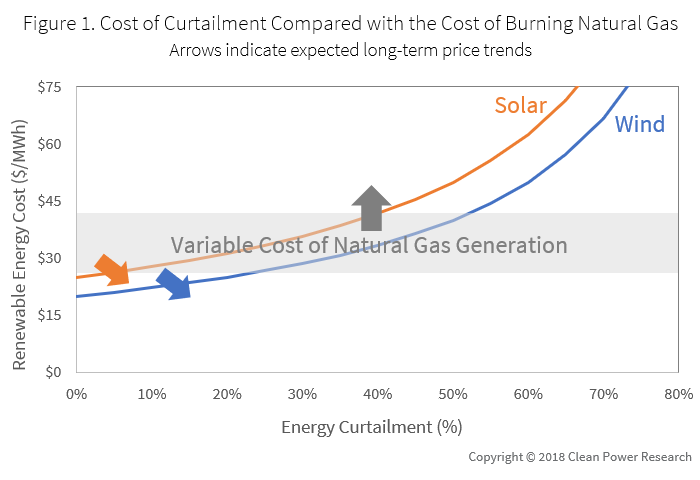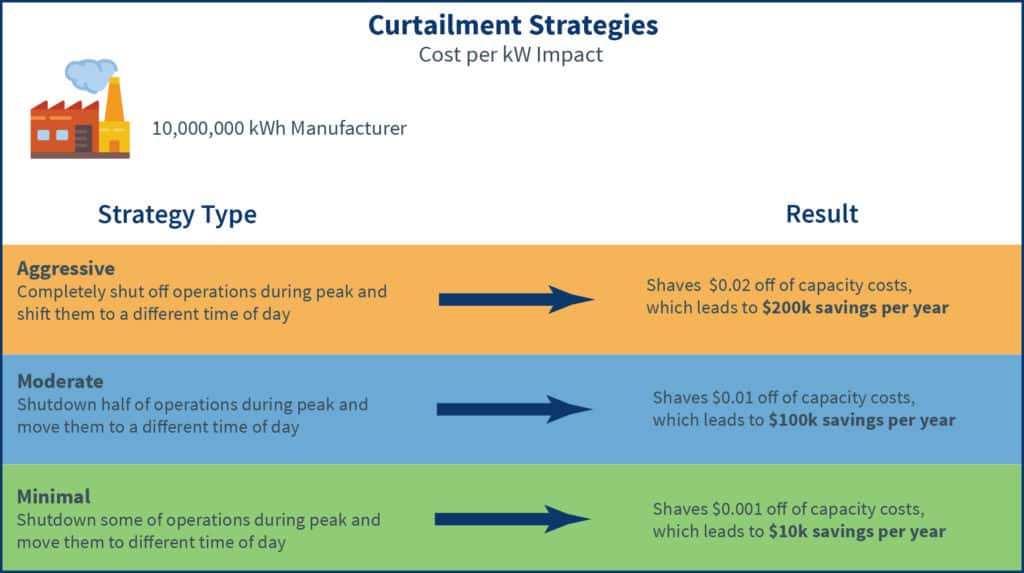

- #Homer energy cost of curtailment software#
- #Homer energy cost of curtailment iso#
- #Homer energy cost of curtailment Offline#
- #Homer energy cost of curtailment plus#
In both cases, this lost energy could be captured by a DC-coupled energy storage system. This phenomenon also takes place when there is cloud coverage. Adding energy storage through a DC-to-DC converter allows for the capture of this generated energy from the margins. As a result of this minimum voltage threshold, the available generated energy in the morning and evening when voltage on the array is below the PV inverter ’wake up’ threshold is not captured. On a 1,500V DC nominal system, this ‘wake up’ voltage may be around 500V DC. PV inverters typically require a minimum threshold DC bus voltage to operate. LOW VOLTAGE HARVESTING - Make Money On The Edges With a DC-coupled energy storage system, energy production can continue with energy being stored and available for discharge when curtailment ends. Curtailment is sometimes seen in areas of high solar penetration - such as California - when there is overall excess production on the grid.
#Homer energy cost of curtailment iso#
The same uptime capabilities apply when a large utility-scale array is curtailed by the ISO or utility.
#Homer energy cost of curtailment Offline#
When the PV inverter is offline the energy from the array can still flow to the batteries via the DC-DC converter ensuring energy can be harvested for later use. When storage is on the DC bus behind the PV inverter, the energy storage system can operate and maintain the DC bus voltage when the PV inverter is off-line for scheduled or unplanned outages. Without energy storage, these kWhs are lost and revenues stunted.ĬURTAILMENT & OUTAGE RECAPTURE - Continuous Uptime and Revenue Generation This stored energy can then be fed into the grid at the appropriate time. With storage attached to the array, the batteries can be charged with excess PV output when the PV inverter hits its peak rating and would otherwise begin clipping.

Depending on your location and type of racking, the total clipped energy can be over 1,000,000 kWh per year. Using a simplified system for illustrative purposes, consider a 14MW DC PV array behind a total inverter capacity of 10MW AC. Given common inverter loading ratios of 1.25:1 up to 1.5:1 on utility-scale PV (PV DC rating: PV AC rating), there is an opportunity for the recapture of clipped energy through the addition of energy storage. That is storage makes PV generation a dispatchable revenue generating asset.ĭepending on the available local energy market, this may translate to higher kWh rates for firm capacity during dispatchable periods.ĮNERGY TIME SHIFTING - Utilize Generated PV Energy When Its Value is HighestĮnergy Storage allows bulk energy shifting of solar generation to take advantage of higher PPA rates in peak periods, or to allow utilities to address daily peak demand that falls outside periods of solar generation.ĬLIPPING RECAPTURE - Maximize Value of PV Generated Energy They include:ĬAPACITY FIRMING - Turn Solar into a Dispatchable assetįor certain time periods during the day the availability of storage gives the system operator the ability to bid firm capacity into merchant markets. Owners and operators the opportunity to capture additional revenues only available with the addition of energy storage. The addition of energy storage to an existing or new utility-scale PV installation allows system
#Homer energy cost of curtailment plus#
Solar Plus Energy Storage Revenue Streams
#Homer energy cost of curtailment software#
In addition to this overview, Dynapower has detailed papers on each topology as well as proprietary modeling software to determine the optimal topology for utility-scale solar plus storage installations to help installation developers and owners determine which approach will provide the greatest ROI when adding energy storage.Ī recent NREL report examined the economics of each topology to determine which approach provided the greatest ROI. We will also consider all possible revenue streams of solar plus storage and their availability based on available systems for coupling storage. In this post, Dynapower will examine the coupling of energy storage with utility-scale PV by defining and comparing three principle methods: AC-coupled, DC-coupled, and Hybrid solar-plus-storage inverters.

Choosing the right topology is critical to maximizing the impact of coupling energy storage with utility-scale solar installations. The majority of utility-scale PV base could expand energy production and increase revenues with the addition of energy storage. Utility-scale solar will only reach its fullest financial and energy generating potential with the addition of energy storage, however. NORTH AMERICA currently has tens of gigawatts of installed utility-scale PV generation with many more gigawatts under construction.


 0 kommentar(er)
0 kommentar(er)
